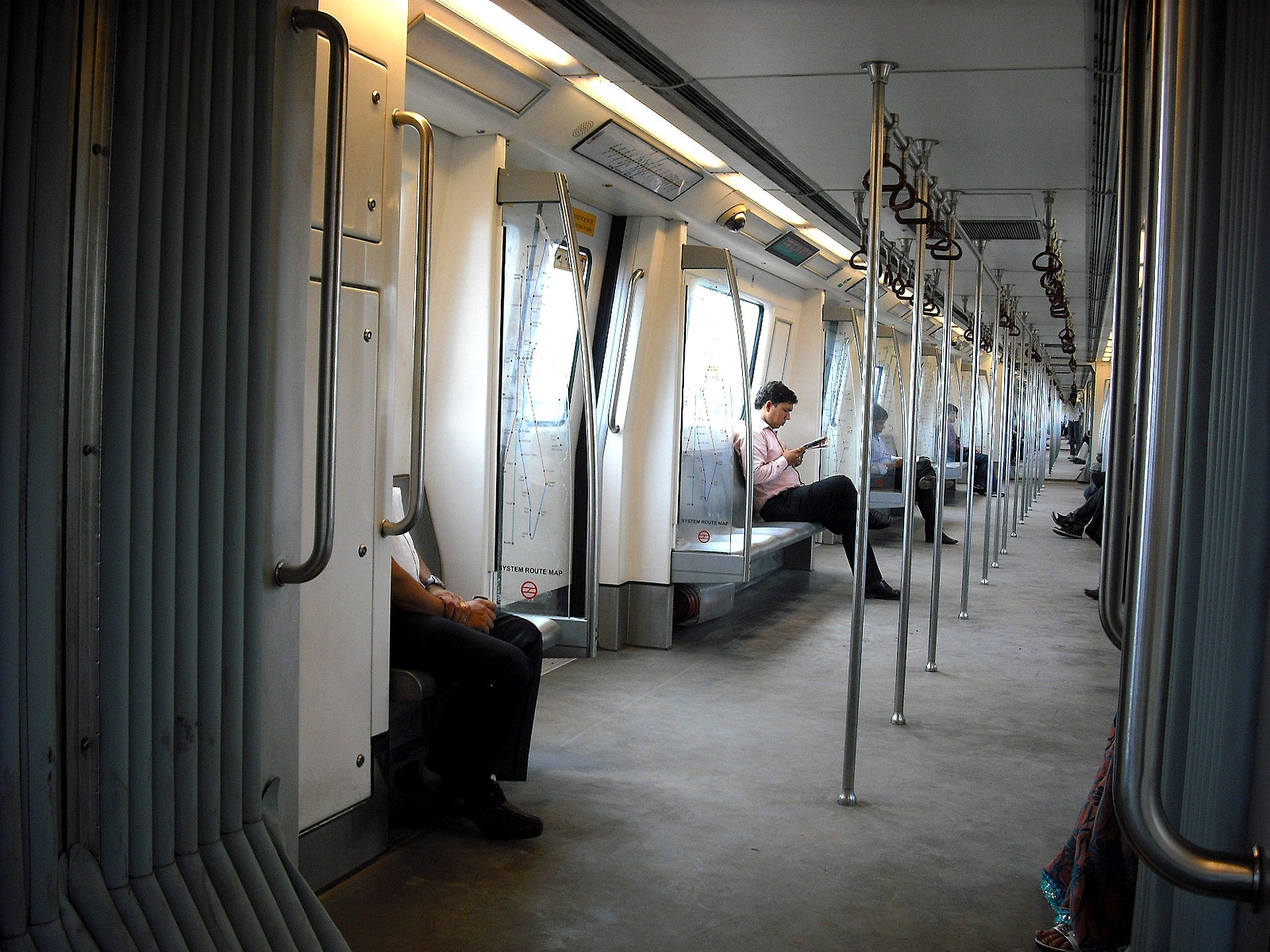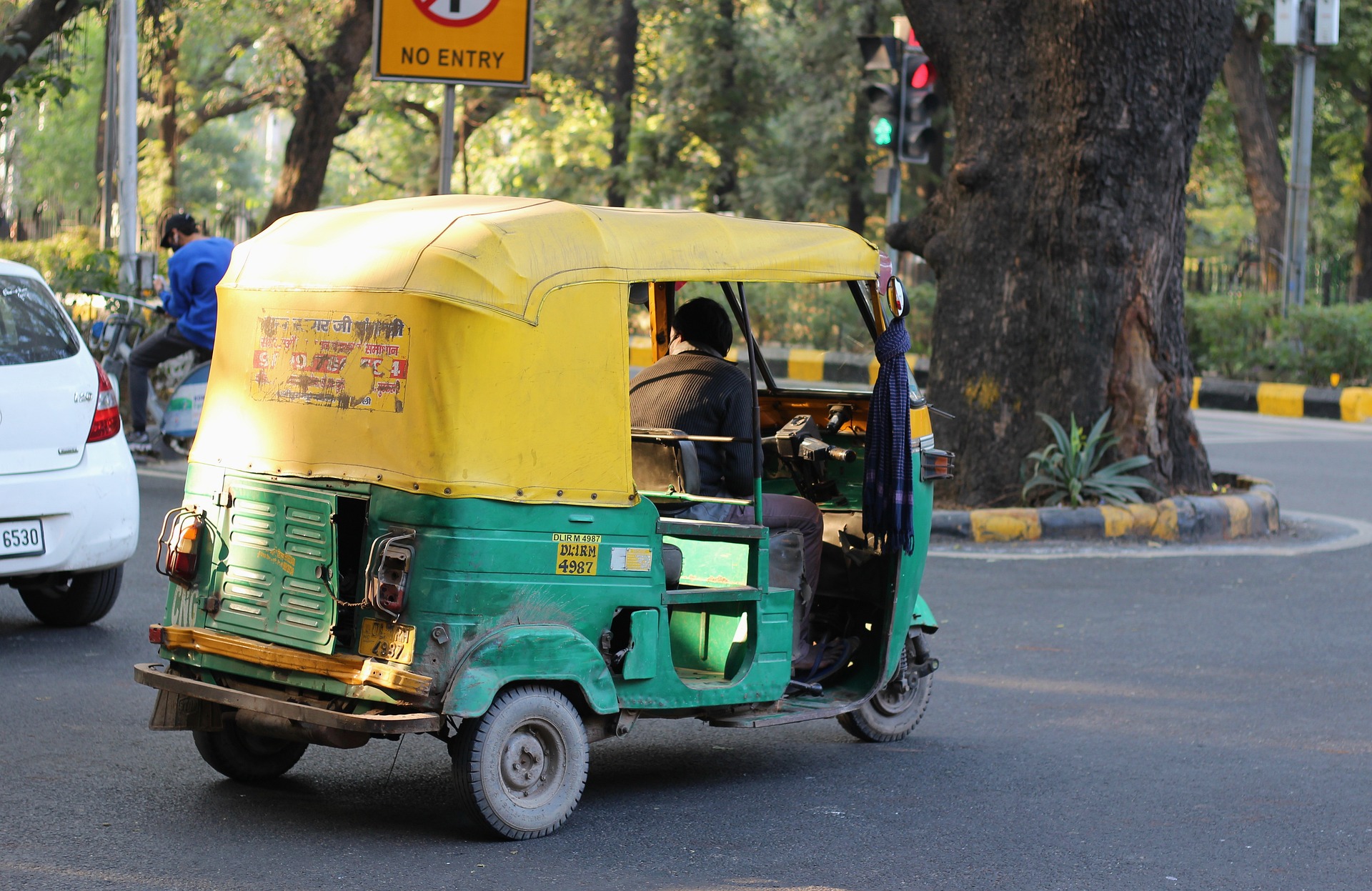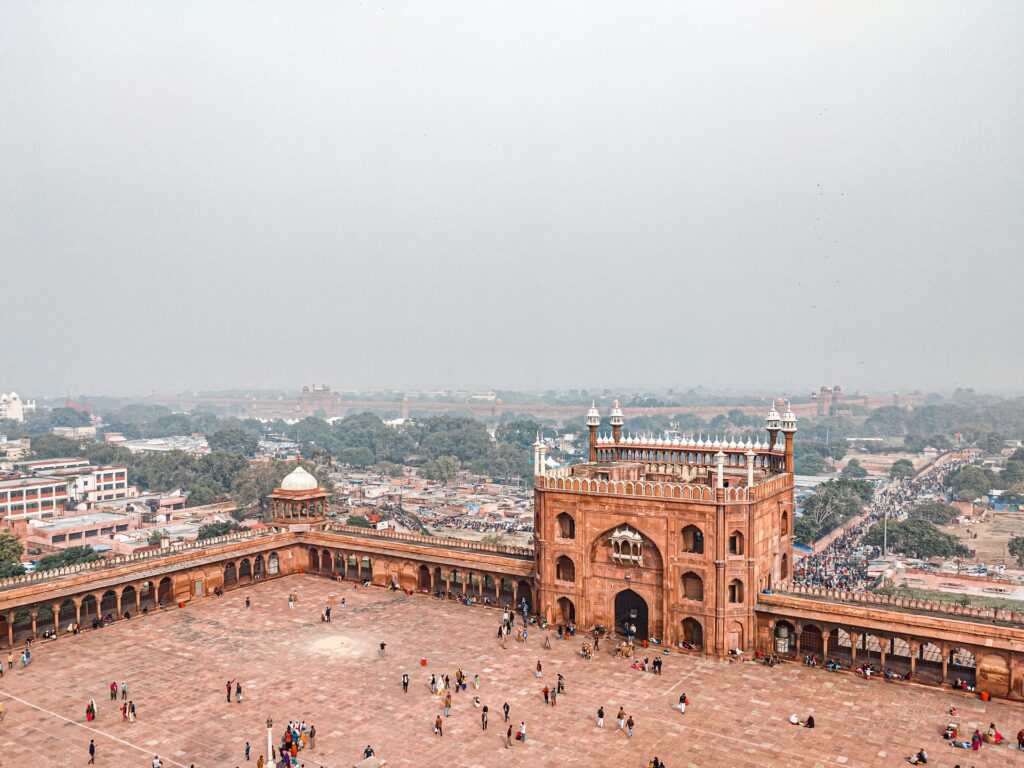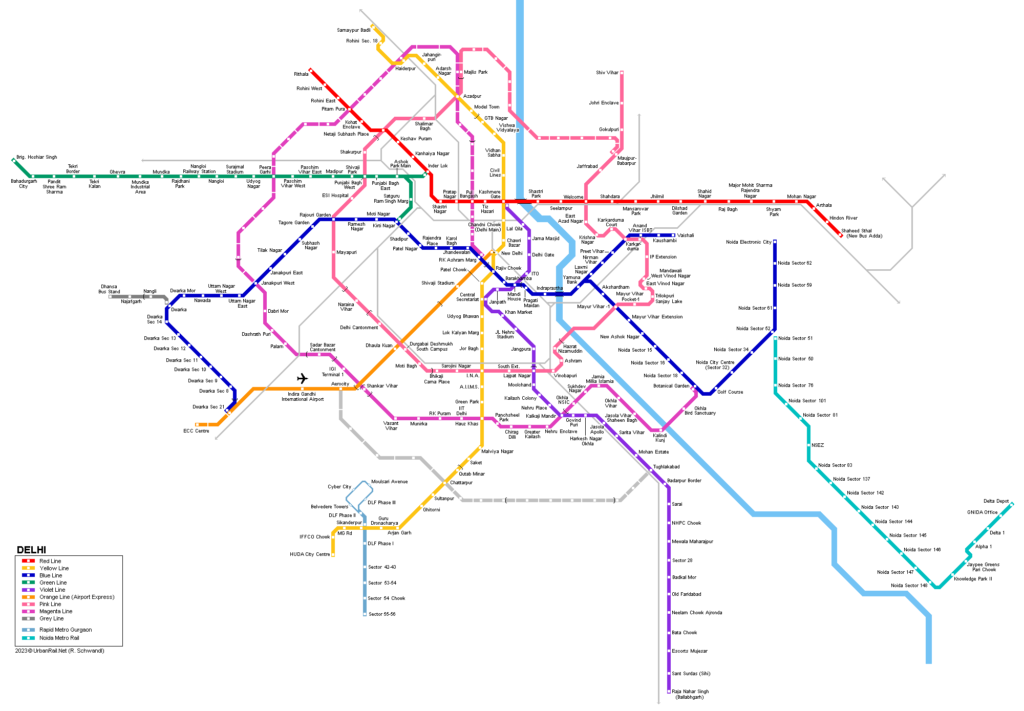There are a variety of modes of public transportation available in Delhi, including buses, metro trains, auto-rickshaws, and even cycle rickshaws. These modes of public transportation make it easy to navigate the city. The Delhi Metro is an especially well-liked mode of transportation since it is fast, dependable, and covers more than 250 kilometers of track, making it an excellent choice. Over 5,000 public buses are operating in the city, and these buses travel over 1,500 different routes. Dedicated bike lanes and facilities for cycle sharing have recently been made available as part of the recent rollout of several new initiatives by the government of Delhi to encourage riding.
Metro system in Delhi: Basic information
Getting around in Delhi is a breeze because of the city’s efficient subway system. It is a contemporary transportation network that is both effective and cost-effective, and it has approximately 250 stations and ten different color-coded lines. The metro system is an essential component of the city’s infrastructure, as it connects the various parts of the city and makes traveling to other regions of India quick and convenient. The Delhi Metro Rail Corporation (DMRC), which is also the name of the company, operates the Delhi Metro, which is the second-largest metro system in India after Mumbai. The purchase of a ticket on the metro can be done in a variety of ways, including with a token, a card, or online.

The lines of the Delhi subway system
Delhi is the capital of India and one of the most populous cities in the world. It is also home to a large public transportation system, including the Delhi Metro, which is a rapid transit system that covers most of the city. The network consists of 10 color-coded lines serving 255 stations with a total length of 348 kilometers spanning across Delhi, Noida, Ghaziabad, and Faridabad.
The Delhi Metro has 10 lines: Red Line, Yellow Line, Blue Line, Green Line, Violet Line, Airport Express Line, Pink Line, Magenta Line, Grey line, and Airport Express Line.
- Red Line (Line 1) extends from Dilshad Garden in the north to Rithala in the west, with a total of 34 stations and an average station spacing of 2.2 km.
- Yellow Line (Line 2) is the longest in the system, extending from Samaypur Badli in the north to HUDA City Centre in the south. It has a total of 37 stations, with an average station spacing of 1.4 km.
- Blue Line (Line 3/4) is the second longest in the system, extending from Dwarka Sector 21 in the west to Noida Electronic City in the east. It has a total of 50 stations, with an average station spacing of 1.5 km.
- Green Line (Line 5) extends from Inderlok in the west to Brigadier Hoshiyar Singh in the east, with a total of 21 stations and an average station spacing of 2.1 km.
- Violet Line (Line 6) stretches from Kashmere Gate in the north to Escorts Mujesar in the south, with a total of 27 stations and an average station spacing of 2.3 km.
- FinalAirport Express Line extends from New Delhi Station in the north to Dwarka Sector 21 in the west, with a total of 6 stations and an average station spacing of 4.2 km.
- Pink Line (Line 7) extends from Majlis Park in the north to Shiv Vihar in the east, with a total of 39 stations and an average station spacing of 1.9 km.
- Magenta Line (Line 8) extends from Janakpuri West in the west to Botanical Garden in the south, with a total of 38 stations and an average station spacing of 1.9 km.
- Grey Line (Line 9) is a line of the Delhi Metro that connects Dwarka to Dhansa Bus Stand located in Najafgarh in the western part of Delhi, India. The total length of the line is 5.2 kilometers.
The Delhi Metro is a convenient, efficient, and affordable way to get around the city. It has greatly improved the quality of life of those who use it and has had a positive impact on the environment. With its 10 lines, the Delhi Metro is essential to Delhi’s public transportation system.
Map of Delhi Metro 2023: Free Download in PDF
The Delhi Metro is one of the most advanced and well-connected public transportation systems in the world. With its expansion plans for 2023, there is no doubt that it will become even more efficient and user-friendly. For commuters looking to make use of this system, a free downloadable PDF of the Delhi Metro Map 2023 is available. This map contains all the routes and stations of the upcoming expansion, which should make it easier for people to plan their journeys. With this map, anyone can quickly and accurately navigate the vast Delhi Metro network.
Public transport tickets in Delhi: best types for travelers & actual prices
Buses, metro trains, and auto-rickshaws are becoming increasingly popular modes of public transit in Delhi, with many commuters opting to use these modes of conveyance to get around the city. Because there is such a wide variety of tickets to choose from, making the decision about which one to buy might be challenging. Commuters in Delhi are fortunate in that they can choose from several different types of tickets, each of which comes with a unique set of advantages over the others.
There are a few different kinds of tickets that passengers may purchase for use on the Delhi Metro. The normal ticket is the most typical one, and it may be purchased at any metro stop. These tickets are required to be purchased in advance of boarding the train, and each one is only good for one specific trip. There is another type of ticket known as a daily pass that enables unrestricted travel on any and all metro routes for a single day. In addition, commuters have the option of purchasing monthly or annual passes, which result in significant cost savings when compared to paying for individual rides.
There are two different kinds of tickets that may be purchased for individuals who ride buses:
- Single-ride tickets, which must be purchased in advance and can only be used once, are by far the most frequent type of ticket.
- You also have the option of obtaining a prepaid bus pass, which enables limitless travel on any and all bus lines for a specified amount of time and costs a predetermined amount of money. Those who take the bus frequently may find this alternative to be a more financially prudent choice.
Auto-rickshaws are another well-liked mode of public transit in Delhi. Fares for these vehicles are typically negotiated directly with the driver. There are, however, some auto-rickshaws that do accept prepaid tickets. These tickets typically come with discounts and may be bought at a variety of locations across the city.
Auto-rickshaw passes that are pre-paid are the greatest alternative for travelers who are only going to be in Delhi for a short amount of time. You may buy this at specific spots all across the city, and it grants you access to an unlimited number of rides for a predetermined amount of time. The price of the pass is determined by the length of time the pass is valid for, however, purchasing the pass is almost always a more cost-effective option than buying individual ride tickets.
Timetables & Schedules of the Delhi Metro system
On a daily basis, the Delhi Metro system begins service at approximately 5:30 AM and continues until 11:30 PM, with some lines working until as late as 1:30 AM. During peak hours, the system operates at a frequency of five to ten minutes, while the frequency during off-peak hours is fifteen minutes, with the frequency increasing during peak hours.
What Are Other Options for Public Transportation in Delhi?
In addition to the metro, there are a number of other public transit choices available to people in Delhi. Auto-rickshaws, cycle-rickshaws, buses, taxis, and app-based cab services are all examples of these types of transportation. Because they are typically more affordable than taxis and enable customers to travel shorter distances, auto-rickshaws are one of the most common modes of transportation. When traveling shorter distances, cycle-rickshaws are a slower but more cost-effective mode of transportation. The Delhi Transport Corporation is responsible for the operation of buses, which are a well-liked mode of transportation for longer journeys. There are also app-based cab services accessible, such as Uber and Ola, which offer a convenient and secure mode of transportation alternative for travelers. In Delhi, using the public transit system is an excellent choice for getting around the city.

public bus transportation in Delhi
Both locals and visitors will find that using the city’s buses, run by the public transit system, is a simple and affordable way to get around the busy city of Delhi. The Delhi Transport Corporation is in charge of the city’s public bus system, which consists of roughly 5,000 buses and is available to both local residents and tourists.
It is simple to board a bus anywhere in the city thanks to the Delhi Transport Corporation’s more than 8,000 bus stops, which are conveniently positioned across the metropolis. The buses are color-coded according to the route that they travel, and each one is equipped with a display that provides information regarding the route, the time of departure, and any stops that are made along the way. The tickets for long-distance excursions can be purchased in a number of different ways, and passengers have the option to pay for their tickets while riding the bus.
When it comes to the most popular bus lines in the city, three of the most used routes are the 205, which connects Old Delhi and New Delhi; the 901, which connects Shahdara and Mahipalpur; and the 801, which connects Connaught Place and Paharganj. All of these bus lines serve a variety of different neighborhoods around the city. In the morning and afternoon rush hours, commuters make heavy use of these routes because they cover key locations around the city.
The Delhi Transport Corporation also provides a variety of additional services, such as tours of the city, unique deals for tourists, and even a smartphone app that assists consumers in locating the most efficient travel routes. Because of all of these facilities, getting around the city without having to use a car is now much simpler for commuting residents as well as tourists.
SUBURBAN AND EXPRESS TRAINS in Delhi
Public trains in Delhi are divided into two types:
- Suburban trains are short-distance trains that run within the city
- Express trains are long-distance trains that connect Delhi to many other cities and states.
Suburban trains operate primarily on the Delhi Suburban Railway (DSR). The DSR is an older network of commuter trains that run on the outskirts of Delhi. It is operated by the Indian Railways and is mostly used by commuters traveling to and from work.
Express trains, on the other hand, are long-distance trains that connect Delhi to other cities and states. These trains run on a network of tracks that span across the country, allowing passengers to travel to distant cities in a matter of hours. Some of the most important express train connections from Delhi include: the Delhi-Mumbai Express, the Delhi-Kolkata Express, the Delhi-Chennai Express, the Delhi-Ahmedabad Express, and the Delhi-Agra Express.
How To Get From Indira Gandhi International Airport (DEL) To The City Center With Public Transport?
When you go to a new city for the first time, it can be an overwhelming experience, especially if you don’t know your way around. If you are looking to go from the Indira Gandhi International Airport to the central business district of the city, you will be relieved to learn that there are a number of different modes of public transit that you may take to accomplish this journey. From Indira Gandhi International Airport (IGIA), these are some of the most common routes that will take you into the heart of the city.
The Indira Gandhi International Airport and the Central Business District of Delhi are both easily accessible through the Delhi Metro. The airport is linked to the metro system by the Airport Express Line, which is a specialized line that travels directly from the airport to the heart of the city. The line begins its journey from Terminal 3 of the airport and makes stops at a number of stations along the way. Some of these stations include Dhaula Kuan, New Delhi, and Rajiv Chowk. The trip should take about twenty minutes, and the cost should be determined according to the distance traveled.
There is also the Delhi Airport Metro Express (DAME), which is an additional viable alternative. This is a specialized service that offers one-way transportation between the airport and the central business district of the city. It takes around half an hour to go to the heart of the city with this service, which departs from Terminal 1 of the airport. The price of the ticket is determined by the total distance traveled, and there are special rates for children, students, and senior citizens.
There is also the possibility of using the bus to get from the airport to the heart of the city. Indira Gandhi International Airport and the Central Business District are both serviced by a number of buses that are operated by the Delhi Transport Corporation (DTC). The rates are relatively low, and the buses include air conditioning for your comfort. The trip takes approximately one hour, give or take depending on the amount of traffic.
how to spend 3 days in DELHI?
Are you looking for a unique and exciting experience during your three-day visit to Delhi? With its rich culture, diverse cuisines, and vibrant nightlife, there’s something for everyone in Delhi! To make the most of your visit, here’s a three-day itinerary for the perfect experience.
Day 1: Explore the city
Start your day with a visit to the iconic Red Fort. This 17th-century fort is a symbol of Mughal grandeur and is a must-visit. After exploring the fort, head to the National Gandhi Museum, which tells the story of Mahatma Gandhi’s life and his influence on the nation’s history. This museum is a great place to learn about India’s freedom struggle and its influence on the world.
End your day with a visit to Chandni Chowk. This bustling bazaar is a great place to shop for souvenirs and sample some of Delhi’s delicious street food.
Day 2: Get a taste of Delhi
On the second day, get ready to explore Delhi’s culinary scene. Start your day by visiting a local food market, where you can sample some of the city’s most popular dishes. This is a great way to experience the flavors of Delhi’s cuisine.
In the evening, head to a rooftop restaurant for dinner. Here, you’ll be treated to a delicious meal with stunning views of Delhi’s skyline.
Day 3: Experience Delhi’s nightlife
On the last day of your trip, immerse yourself in Delhi’s vibrant nightlife. There are plenty of bars, clubs, and live music venues to explore. If you’re looking for a more laid-back atmosphere, there are also plenty of cafes and lounges to relax in.
No matter what you choose to do, Delhi has something for everyone. With its rich culture, delicious cuisine, and vibrant nightlife, your three-day trip to Delhi will be an unforgettable experience.
What other metro systems are nearby to Delhi ?
The fact that Delhi is home to one of the busiest metro systems in the world makes it an excellent transportation hub for commuters. If, on the other hand, you are interested in seeing the surrounding area, there are several additional metro systems located in close proximity to Delhi. The Rapid Metro Gurgaon, Noida Metro, Faridabad Metro, and Ghaziabad Metro are all within easy reach of Delhi, giving a convenient choice for individuals who wish to travel within the region. Delhi is the capital of India. The Jaipur Metro and the Kolkata Metro are also accessible from Delhi, providing for a more in-depth tour of India by travelers interested in venturing further afield.
CHECK OUT DELHI’S AMAZING PUBLIC TRANSPORTATION VIDEO GUIDE
Summary of our tour guide for Delhi
Having lived in Delhi for the past four years, I have come to appreciate the public transportation system in the city. It is reliable, efficient, and affordable. The Metro system is especially impressive, with many different lines covering the whole city. It is easy to use and very convenient. The buses and taxis are also excellent, and they provide an affordable way to get around. The public transportation system in Delhi has made my life much easier and has allowed me to explore the city with ease.
Top 5 FAQs and answers about Delhi public transport
- What are the different public transport options available?
- Delhi offers a variety of public transport options. The Delhi Metro is a widely used system, connecting various parts of the city and even extending to neighboring regions like Noida and Gurgaon. Delhi Transport Corporation (DTC) buses, both AC and non-AC, also offer extensive connectivity. For shorter distances or last-mile connectivity, auto-rickshaws, cycle rickshaws, and app-based cab services like Ola and Uber are available.
- How can I use the Delhi Metro?
- The Delhi Metro is a convenient, fast, and economical mode of transport. You can buy a token for a single journey or a smart card for multiple trips. Smart cards offer a 10% discount on every journey and can be recharged at metro stations or online. Metro services start from around 5 AM until 11:30 PM, with trains running at frequent intervals.
- Is the public transport system safe?
- Safety is a significant concern for many, especially for women and tourists. The Delhi Metro and DTC buses have dedicated coaches for women and are generally considered safe. Auto-rickshaws and taxis are also safe for the most part, but it’s advisable to use app-based cab services for late-night travels. Most vehicles have GPS tracking facilities, and drivers’ details are documented, increasing safety levels.
- How do I pay for public transport in Delhi?
- Payment methods vary across different modes of transport. For the Delhi Metro, you can pay using tokens or smart cards. DTC buses accept both cash and electronic payments via an e-ticketing system. For auto-rickshaws, cycle rickshaws, and traditional taxis, cash is the primary mode of payment, but many now also accept digital payments. App-based cab services allow payments through cash, digital wallets, or cards.
- How reliable is the public transport system in Delhi?
- Delhi’s public transport system is generally reliable. The Delhi Metro, in particular, is known for being punctual. Buses may sometimes be delayed due to traffic congestion, but they run on almost all major routes throughout the day. Autos, taxis, and app-based cab services are readily available, making it easy to travel around the city at any time.
Useful links








